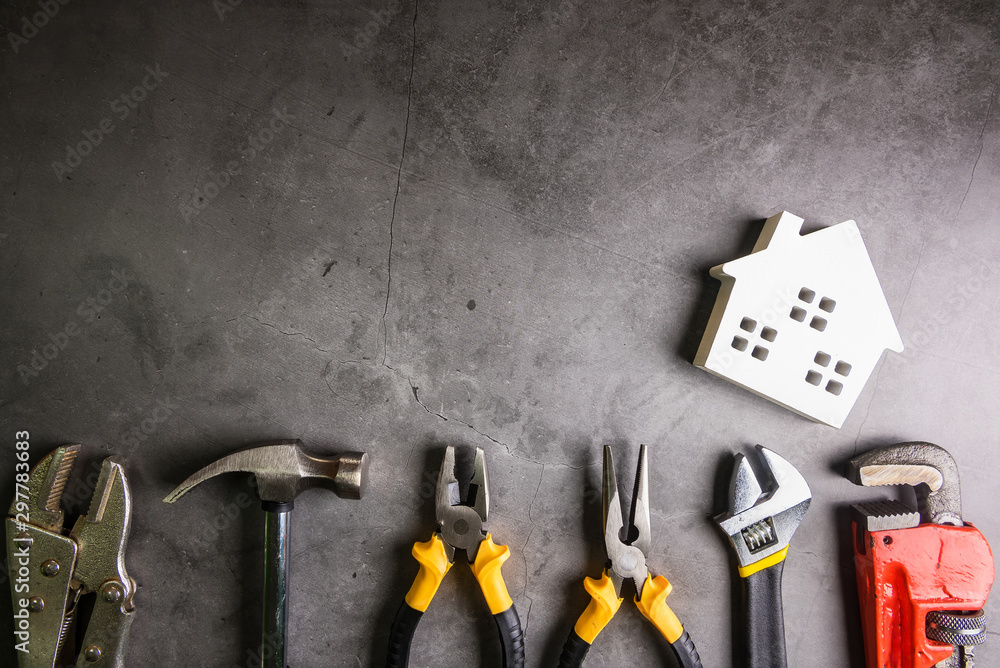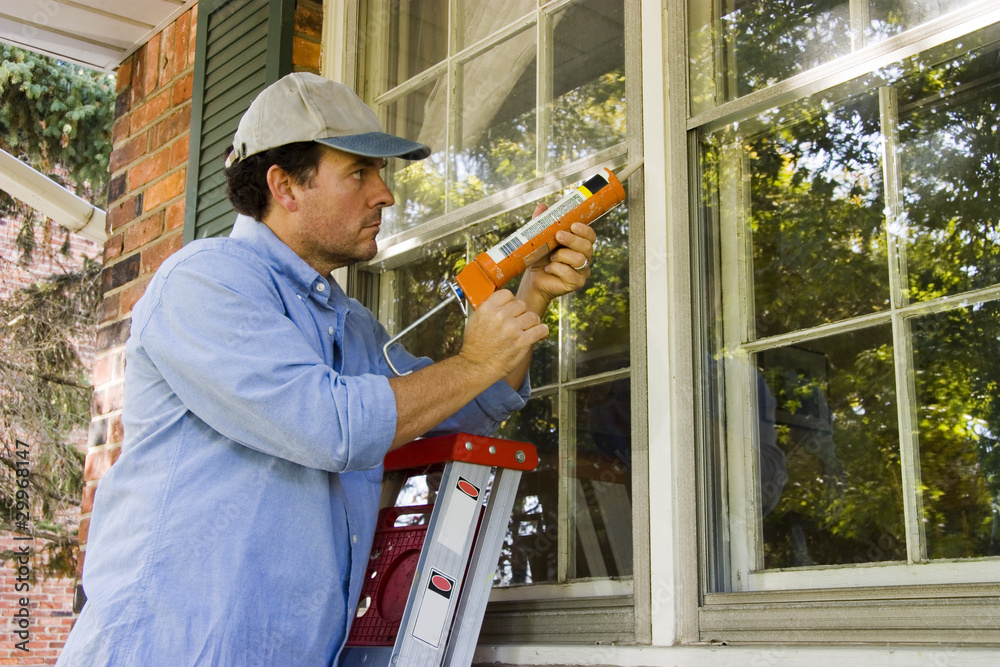Maintaining and improving your home is an ongoing process that ensures your living space remains comfortable, functional, and visually appealing. Whether you are a new homeowner or a seasoned DIY enthusiast, understanding the essentials of home maintenance and improvement can save you time, money, and stress. This comprehensive guide covers everything from routine maintenance tasks to major home improvement projects, offering tips and advice to keep your home in top condition.

Table of Contents
- Introduction
- Importance of Home Maintenance and Improvement
- Routine Maintenance Tasks
- Seasonal Checklists
- Monthly Maintenance Tasks
- Annual Maintenance Tasks
- Home Improvement Projects
- Planning and Budgeting
- DIY vs. Hiring Professionals
- Popular Home Improvement Projects
- Energy Efficiency Improvements
- Insulation and Weatherproofing
- Energy-Efficient Appliances
- Solar Panels and Renewable Energy
- Safety and Security Enhancements
- Home Security Systems
- Fire and Carbon Monoxide Detectors
- Childproofing Your Home
- Exterior Home Maintenance
- Roofing and Gutters
- Landscaping and Lawn Care
- Exterior Painting and Siding
- Interior Home Maintenance
- Plumbing and Electrical Systems
- HVAC Maintenance
- Flooring and Wall Care
- Tips for Staying Organized
- Creating a Home Maintenance Calendar
- Keeping Records and Receipts
- Conclusion
- The Long-Term Benefits of Regular Home Maintenance and Improvement
1. Introduction
Importance of Home Maintenance and Improvement
Maintaining and improving your home is essential for several reasons. Regular maintenance ensures that your home remains safe and comfortable, preventing minor issues from escalating into costly repairs. Home improvement projects, on the other hand, can enhance your living space, increase the value of your property, and improve your overall quality of life.
By staying on top of home maintenance tasks and planning improvement projects wisely, you can avoid unexpected expenses and enjoy a beautiful, functional home for years to come.
2. Routine Maintenance Tasks
Seasonal Checklists
Spring
- Inspect and clean gutters and downspouts
- Check the roof for damage or leaks
- Service the air conditioning unit
- Inspect windows and doors for drafts and caulk if necessary
- Clean and inspect the exterior siding
Summer
- Maintain lawn and garden
- Inspect and clean outdoor furniture
- Check for signs of pests and treat as needed
- Inspect and clean the garage
- Test smoke and carbon monoxide detectors
Fall
- Service the heating system
- Clean and inspect the fireplace and chimney
- Check the roof and gutters for leaves and debris
- Drain and store garden hoses
- Inspect and seal windows and doors
Winter
- Inspect plumbing for leaks and insulate pipes
- Check attic insulation
- Test and replace batteries in smoke and carbon monoxide detectors
- Monitor indoor humidity levels
- Clear snow and ice from walkways and driveways
Monthly Maintenance Tasks
- Test smoke and carbon monoxide detectors
- Clean or replace HVAC filters
- Check for leaks around toilets and sinks
- Inspect the water heater for leaks or corrosion
- Clean the garbage disposal
Annual Maintenance Tasks
- Schedule a professional HVAC inspection
- Inspect the roof and chimney
- Flush the water heater
- Clean dryer vents
- Check and repair exterior caulking and weatherstripping
3. Home Improvement Projects
Planning and Budgeting
Before embarking on any home improvement project, it’s crucial to plan and budget carefully. Start by identifying your goals and priorities, whether it’s updating your kitchen, adding a bathroom, or creating a more energy-efficient home. Set a realistic budget and timeline, and research the costs of materials and labor.
DIY vs. Hiring Professionals
Some home improvement projects can be tackled by enthusiastic DIYers, while others require the expertise of professionals. Simple tasks like painting, minor landscaping, and basic carpentry can often be done yourself. However, projects involving electrical work, plumbing, or major structural changes should be left to licensed professionals to ensure safety and compliance with building codes.
Popular Home Improvement Projects
Kitchen Remodeling
- Updating cabinets and countertops
- Installing new appliances
- Adding a kitchen island
- Upgrading lighting fixtures
Bathroom Renovation
- Replacing old fixtures and fittings
- Installing new tiles or flooring
- Adding a vanity or storage
- Upgrading the shower or bathtub
Outdoor Improvements
- Building a deck or patio
- Installing outdoor lighting
- Landscaping and garden design
- Adding a fence or privacy screen

4. Energy Efficiency Improvements
Insulation and Weatherproofing
Improving your home’s insulation and weatherproofing can significantly reduce energy costs. Ensure that your attic, walls, and floors are adequately insulated. Seal gaps and cracks around windows, doors, and other openings to prevent drafts and heat loss.
Energy-Efficient Appliances
Investing in energy-efficient appliances can lower your utility bills and reduce your carbon footprint. Look for appliances with the ENERGY STAR label, which meet stringent energy efficiency guidelines set by the U.S. Environmental Protection Agency.
Solar Panels and Renewable Energy
Installing solar panels is a substantial investment that can pay off in the long run through lower energy bills and potential tax credits. Additionally, consider other renewable energy options such as wind turbines or geothermal heating and cooling systems to make your home more sustainable.
5. Safety and Security Enhancements
Home Security Systems
A robust home security system can protect your home and family from intruders. Modern systems include features like motion detectors, surveillance cameras, smart locks, and alarm systems that can be monitored remotely via a smartphone app.
Fire and Carbon Monoxide Detectors
Ensure your home is equipped with working smoke and carbon monoxide detectors. Test these devices regularly and replace batteries as needed. Place detectors in key areas such as the kitchen, bedrooms, and near any gas-powered appliances.
Childproofing Your Home
If you have young children, take steps to childproof your home. Install safety gates, secure furniture to walls, cover electrical outlets, and store hazardous materials out of reach.
6. Exterior Home Maintenance
Roofing and Gutters
Regularly inspect your roof for damaged or missing shingles and repair them promptly to prevent leaks. Clean your gutters and downspouts to ensure proper drainage and prevent water damage to your home’s foundation.
Landscaping and Lawn Care
Maintain your lawn by mowing regularly, fertilizing, and controlling weeds. Prune trees and shrubs to promote healthy growth and enhance curb appeal. Consider xeriscaping or using native plants to reduce water usage and maintenance.
Exterior Painting and Siding
Inspect the exterior of your home for peeling paint or damaged siding. Repainting or replacing siding not only improves the appearance of your home but also protects it from weather-related damage.
7. Interior Home Maintenance
Plumbing and Electrical Systems
Regularly check for leaks in plumbing fixtures and repair them to prevent water damage. Inspect electrical outlets, switches, and cords for signs of wear or damage. Hire a professional for any major plumbing or electrical work to ensure safety and compliance with codes.
HVAC Maintenance
Your heating, ventilation, and air conditioning (HVAC) system requires regular maintenance to function efficiently. Change filters regularly, schedule annual professional inspections, and clean ducts and vents to maintain good indoor air quality.
Flooring and Wall Care
Keep your flooring in good condition by cleaning and maintaining it according to the manufacturer’s recommendations. Repair any cracks or holes in walls and repaint as needed to keep your home looking fresh and well-maintained.
8. Tips for Staying Organized
Creating a Home Maintenance Calendar
A home maintenance calendar can help you stay on top of routine tasks. Divide tasks by season and set reminders for monthly and annual checks. Keeping a calendar ensures that nothing is overlooked and helps you plan for upcoming projects.
Keeping Records and Receipts
Maintain a file of records and receipts for any repairs, maintenance, and improvements. This can be invaluable for future reference, warranty claims, or when selling your home. Include details such as dates, costs, and the names of contractors or service providers.
9. Conclusion
The Long-Term Benefits of Regular Home Maintenance and Improvement
Regular home maintenance and improvement are crucial for preserving the value, safety, and comfort of your home. By staying proactive and organized, you can prevent costly repairs, enhance your living space, and enjoy the long-term benefits of a well-maintained home. Whether you tackle projects yourself or hire professionals, investing time and resources into your home is always a wise decision.
In conclusion, a comprehensive approach to home maintenance and improvement ensures your home remains a haven for you and your family. From routine checks to ambitious renovation projects, each step contributes to the overall health and value of your property. Embrace the journey of homeownership with confidence, knowing that you have the tools and knowledge to keep your home in top condition.
Related Articles
https://www.wsj.com/buyside/personal-finance/mortgage/home-maintenance-checklist
